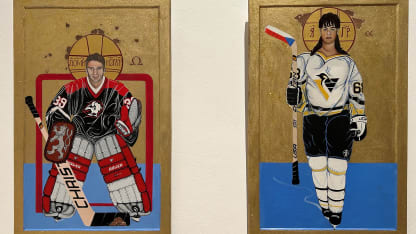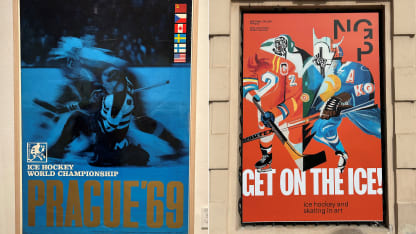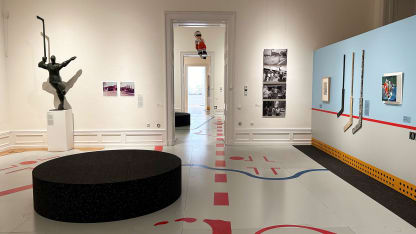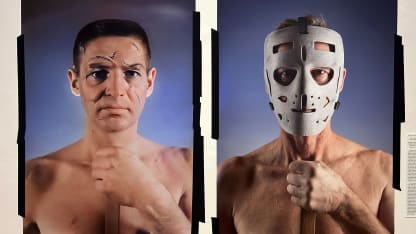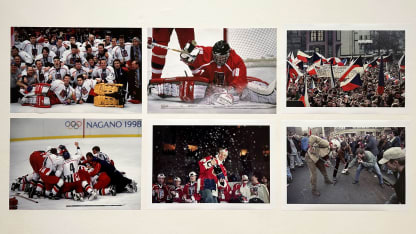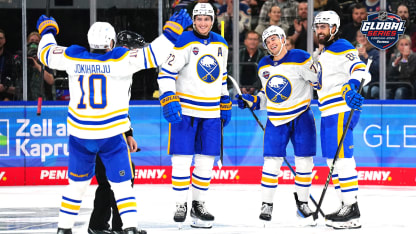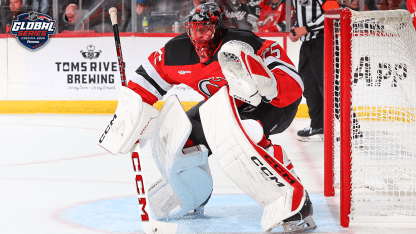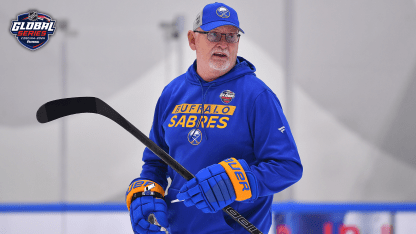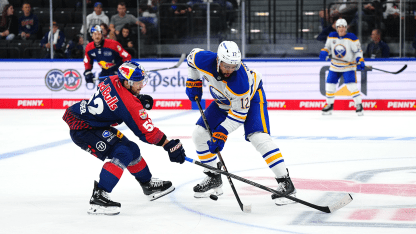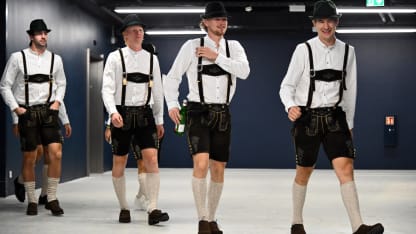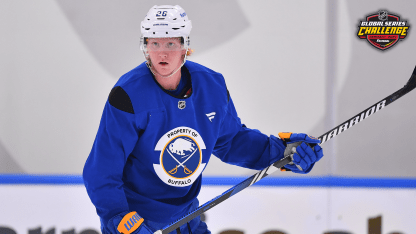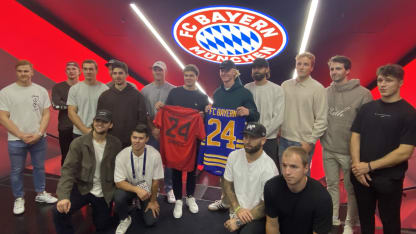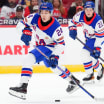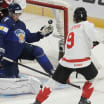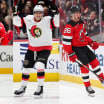PRAGUE -- Sit on a bench in Old Town Square in the heart of Prague. Gaze up at the Church of Our Lady before Týn, the Gothic landmark that features the most famous two spires in “the city of 100 spires.”
Now look down to your left. Two colorful posters hang on the side of Kinský Palace, one in Czech and another in English. “GET ON THE ICE!” they say, advertising an exhibit of “ice hockey and skating in art” at the National Gallery Prague.
Buy a ticket for 270 Czech crowns (about 12 U.S. dollars), walk inside the palace and tour the exhibit. You’ll gain an appreciation for not only the art but the importance of hockey in the Czech Republic. You’ll see players like goalie Dominik Hašek and forward Jaromír Jágr in a way you never have before.
“Hockey has enjoyed great popularity in our country, and it gradually became an integral part of the national identity,” a brochure says. “It also found its way into art.”
